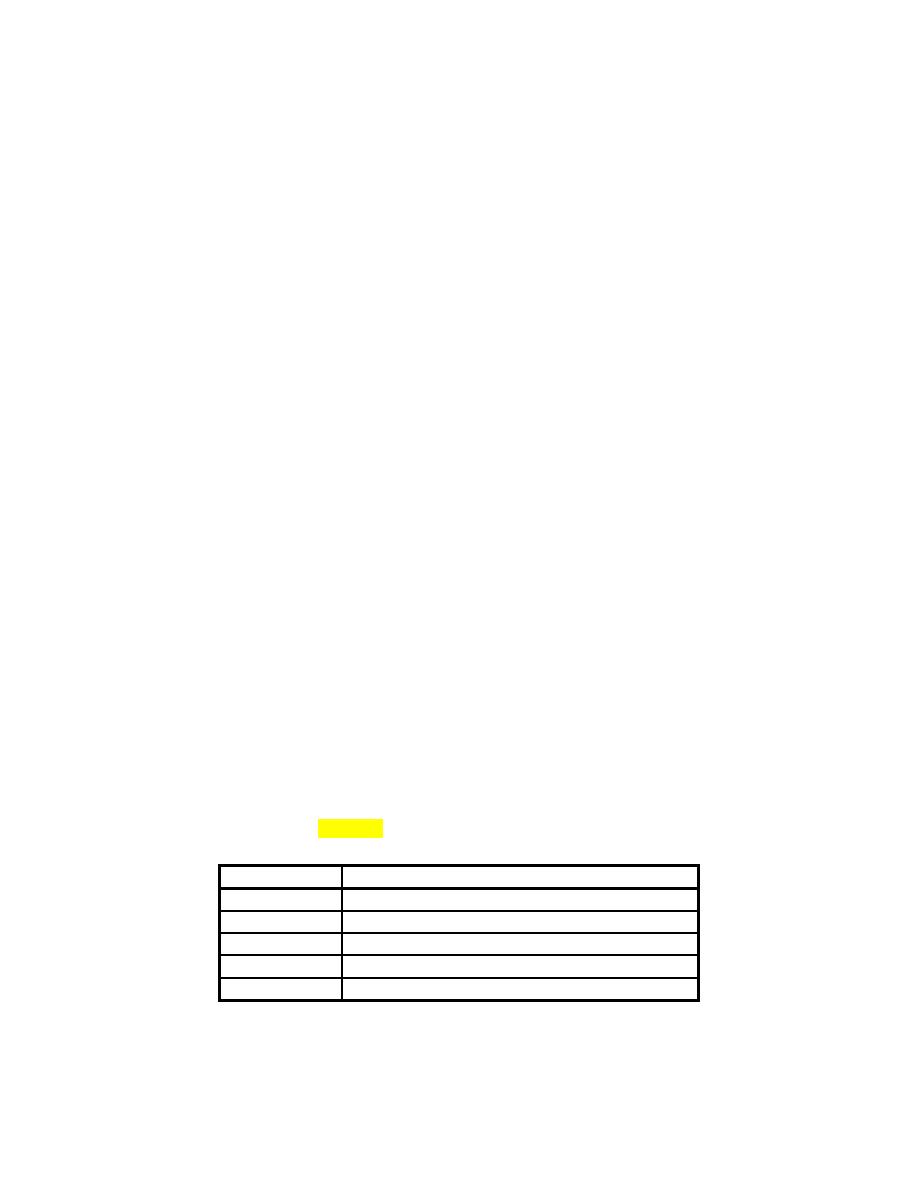
CEMP-E
TI 850-02
AFMAN 32-1125(I)
1 MARCH 2000
CHAPTER 3
ESTABLISHING ROUTE PROFILE AND ALIGNMENT SPECIFICATIONS
1. INTRODUCTION.
a. The procedures outlined in this chapter (along with information on locomotive propulsion force,
desired train capacity, propulsion resistances, and train operating requirements) can be used to select the
maximum grade and curvature and minimum transitions between grades and reverse curves.
b. Initially, these specifications should be treated only as guidelines, as analyses of route topography
may require changes to keep construction costs within acceptable limits. Typically, the information and
procedures described in this chapter will be used iteratively with those in chapter 4 until a suitable
compromise is reached.
c. Appendix B gives a sample problem illustrating the determination of a ruling grade.
d. The specifications listed in this chapter are primarily for main running tracks. Chapter 8 gives
additional profile and alignment specifications for terminal areas. Paragraphs 2 and 3 of chapter 6 detail
field layout of horizontal and vertical curves.
2. GRADES AND GRADE RESISTANCE
a. Definition. Railroad grades are designated by the amount of elevation change in 100 ft of length,
expressed in percent. The additional force required to move a train, due to the presence of a grade, is
known as grade resistance. Grade resistance equals 20 lb for each ton of train weight and percent of
grade. Thus, it takes twice the force to pull a train up a 2-percent grade as it does a 1-percent grade. For
this reason, the choice of maximum gradient (the rate of elevation change on a particular grade) can have
a great effect on operations over a route.
b. Ruling Grade. When a particular grade limits train size (tonnage) and speed over a route, that grade
is known as the ruling grade. The ruling grade is not always the steepest grade, as a train's momentum
may help carry it over a grade steeper, but shorter, than the ruling grade.
c. Grade Design Categories. Table 3-1 lists grade design categories for main running tracks.
Table 3-1. Grade Design Categories for Main Running Tracks
Grade
Description
0.0 to 0.4 %
Light
0.4 to 1.0 %
Moderate
1.0 to 2.0 %
Steep
1.5 %
Suggested Limit for Ruling Grades
2.0 to 3.0 %
Very Steep: To be avoided if possible
3-1



 Previous Page
Previous Page
